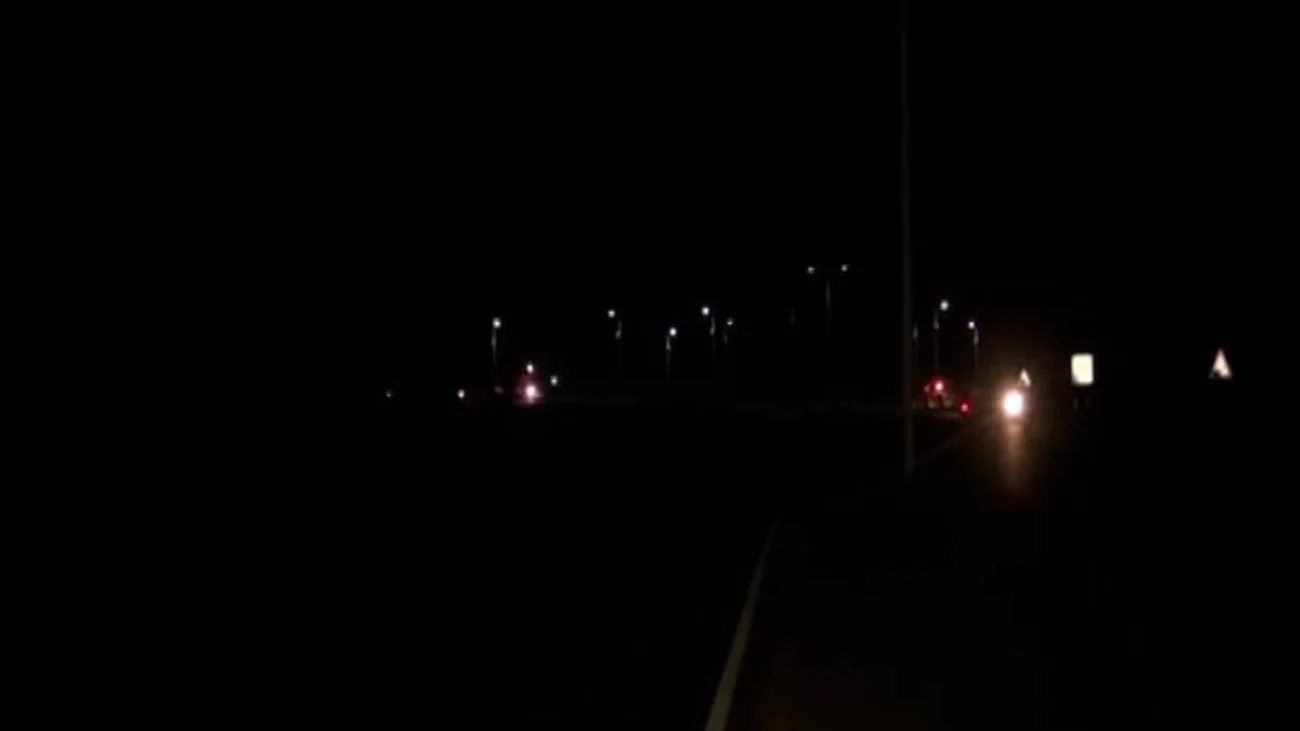Public Lighting in Benin: an impossible mission for Patrice Talon?

Despite the billions invested and the promises of a brightly lit Grand Nokoué, public lighting remains the Achilles heel of Patrice Talon’s urban report card. Repeated breakdowns, acts of vandalism, deployment delays and areas still plunged into darkness; the lighting policy, which was raised to a national priority, has proven its limitations. Let’s take a look back at a series of promises and failures that leave the populations of Grand Nokoué waiting for true light.
Before 2016, public lighting in Benin, including in the metropolis of Cotonou, was largely deficient. Many streets remained plunged in darkness, fostering insecurity and nighttime traffic accidents. The situation was such that upon his arrival in power, President Patrice Talon inherited municipalities incapable of maintaining the rare existing and functional street lamps, let alone investing in new installations. This alarming initial observation pushed the new government to make public lighting among its action priorities.
From his first term, Patrice Talon launched the “Asphaltage” project aimed at urban development (roads, drainage, etc.) in large cities, with an integrated public lighting component. An international call for tenders led in early 2019 to the award of the lighting market to the French SME Fonroche Lighting to supply 15,000 autonomous solar street lamps. The financing was secured in February 2020 via a framework agreement with Bpifrance Financement for an amount of 20.6 million euros (13.5 billion CFA francs). The stated goal was to equip nine agglomerations (including Cotonou, Porto-Novo, Abomey-Calavi, Sèmè-Kpodji, etc.) with solar street lamps in two years, primarily along modernized roads.
Progress was noticeable as early as 2018-2019. For example, the lighting of the main arteries of Cotonou became a reality where the city was once plunged in darkness. In the first phase of the Asphaltage project (2018-2021), 199 km of urban roads were developed and about 13,000 photovoltaic solar street lamps were installed across 9 beneficiary municipalities (Cotonou, Porto-Novo, Parakou, Abomey-Calavi, Sèmè-Podji, Lokossa, Abomey, Bohicon and Natitingou). These latest generation solar street lamps, operating on batteries, have brought definite well-being to the local populations, improving the nighttime lighting of many road axes.
Hitches and limits of the first phase
But despite this progress, the performance remains mixed and reveals structural failures. On the one hand, not all planned street lamps were deployed according to the initial schedule; out of the 15,000 announced in 2019, only around 13,000 were actually installed by the end of 2021. The phase 2 of Asphaltage, which plans for 12,000 additional street lamps in six other municipalities (including Cotonou, Parakou, Kandi, Djougou…), has been delayed and had not started at the planned deadline of 2022, much to the dismay of the concerned inhabitants.
On the other hand, where street lamps have been erected, their longevity has often been lacking. The solar devices have suffered from a lack of maintenance and especially vandalism. Thefts of photovoltaic panels and street lamp batteries have occurred on multiple axes, plunging entire areas back into darkness. For example, on the Cotonou-Ouidah interstate route, several kilometers are back in the dark after the systematic theft of the batteries of the installed solar street lamps, compromising the safety of users. Faced with these acts, the local authorities admitted their helplessness, recognizing a “real problem” and looking for technical solutions (less accessible lithium batteries, etc.) for the future.
Furthermore, Beninese municipalities had neither the financial means nor the technical skills to maintain the public lighting network. As a result, many street lamps (classical or solar) that broke down remained out of service for lack of repairs. The consequence, as early as October 2019, the government convened a national round table on the management of public lighting, which concluded that “Most of our municipalities are unable to maintain or rehabilitate the existing network, or to invest in new lines”. This deficit in local governance greatly contributed to the failures noticed.
The “Light of Benin” plan and results below expectations
Aware of the shortcomings, the Talon government developed in 2021 a broader plan, called “Light of Benin”, part of the priority projects of the Government Action Program (PAG 2021-2026). Its objective is to cover all 77 municipalities in the country with public solar lighting. Specifically, it involves installing the latest generation photovoltaic street lamps along more than 1,600 km of roads across all localities, including strategic sites such as road toll and weighing stations. The project aims to have a direct impact on 6 million Beninese people by improving safety and nighttime economic activity everywhere in Benin.
To carry out this huge project without increasing the public debt, the executive chose a Public-Private Partnership (PPP) mode. The Road Infrastructure and Territory Development Company (SIRAT S.A.) – a dedicated public entity – is in charge of piloting the project and selecting a private partner. A prequalification notice was launched in 2022, marking the start of the operator recruitment process capable of financing, installing and maintaining these thousands of street lamps over 36 months.
By mid-2025, the concrete deployment of the “Light of Benin” project is delayed. No official announcement has yet made news of the completion of installations nationwide, a sign that the PPP is not fully operational. Meanwhile, the level of public lighting coverage remains low in most parts of the territory – a weakness acknowledged by the government itself. Indeed, in the ministers’ council statement from May 4, 2022, it is noted that “the coverage rate of public lighting is extremely low in most of our municipalities, even nonexistent in some of them”. In other words, apart from the major urban centers in the south and some road axes, many Beninese localities remain in the dark once night falls.
Even in the Grand Nokoué – the urban basin encompassing Cotonou and its outskirts – the result is mixed. Granted, several boulevards in Cotonou and arteries of Abomey-Calavi or Porto-Novo were illuminated between 2018 and 2020, improving nighttime circulation. But the major axes leading to the economic capital found themselves without light again within a few years, due to inadequate maintenance. In October 2023, the government had to acknowledge that on the three main accesses to Cotonou (towards Abomey-Calavi, Sèmè-Kpodji, and Ouidah), “the street lamps, whether solar or cabled, are almost entirely out of use”, a situation causing numerous accidents. The Council of Ministers then had to authorize urgently the selection of a company to rehabilitate these defective street lamps on the Godomey-Ouidah, Godomey-Calavi and Carrefour Le Bélier–Ekpè axes. This late admission clearly testifies to the shortcomings of public lighting policy where significant initial investments were compromised by lack of follow-up and vulnerability to malicious acts.
The government spokesman’s explanations (verbatim)
Queried on the issue during a press briefing on Friday, July 4, 2025, the government spokesman, Léandre Houngbédji responded.
In 2016, how many street lamps were active for public lighting in Benin? And in 2025, how many do we have? In 2016, there were less than 10,000, not even 7,000. There were also close to 20,000 that were out of order. Today, there are at least 130,000 street lamps for public lighting in Benin. It’s not enough. There are still roads, places that we would like to see lit, and it’s not the case yet.
Now, you mention certain axes that have already been identified and taken into account by the Council of Ministers for works to be carried out, and that this has been announced. Work is in progress. Look at the transition axes of Cotonou: while the work is advancing, it must be completed. We are not going to install the street lamps before the pavement has been completed and the bases where they should be installed have been identified. But wait for the end of the work, and you will see if the street lamps are not installed.
Beside this, there is a big project, even if it has not taken shape yet: the invisible part is in progress. This is the “Light of Benin” project, which aims to install public lighting in the 77 county seats and in specific districts. This is why the generation of street lamps has evolved. If you’ve noticed, we’ve changed the technology: the batteries are now incorporated, and the street lamps are geolocatable. Some of them are anyway: if they fail, we know at a distance where it happens. If we steal one, we know roughly where to find it.

